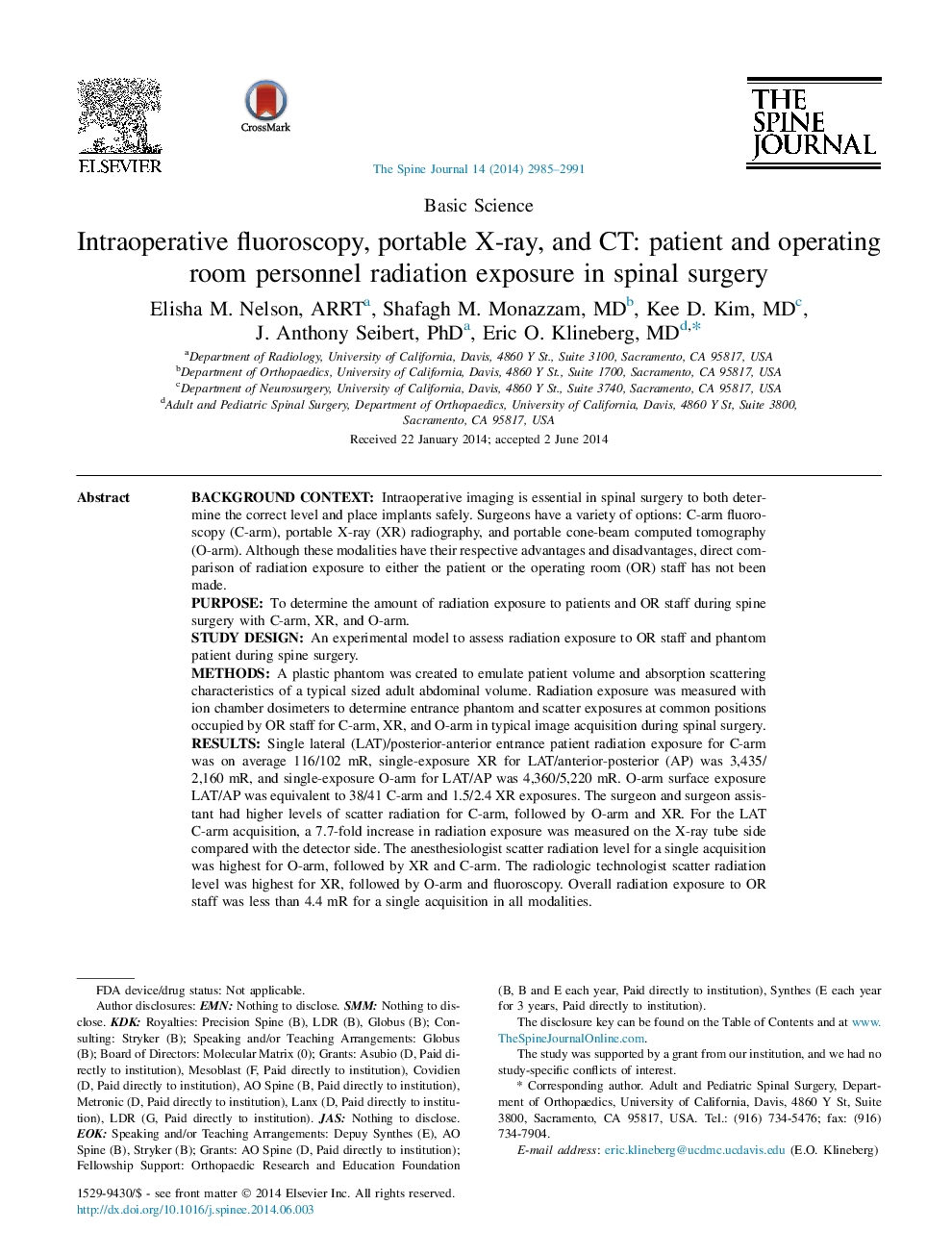| کد مقاله | کد نشریه | سال انتشار | مقاله انگلیسی | نسخه تمام متن |
|---|---|---|---|---|
| 4096185 | 1268553 | 2014 | 7 صفحه PDF | دانلود رایگان |

Background contextIntraoperative imaging is essential in spinal surgery to both determine the correct level and place implants safely. Surgeons have a variety of options: C-arm fluoroscopy (C-arm), portable X-ray (XR) radiography, and portable cone-beam computed tomography (O-arm). Although these modalities have their respective advantages and disadvantages, direct comparison of radiation exposure to either the patient or the operating room (OR) staff has not been made.PurposeTo determine the amount of radiation exposure to patients and OR staff during spine surgery with C-arm, XR, and O-arm.Study designAn experimental model to assess radiation exposure to OR staff and phantom patient during spine surgery.MethodsA plastic phantom was created to emulate patient volume and absorption scattering characteristics of a typical sized adult abdominal volume. Radiation exposure was measured with ion chamber dosimeters to determine entrance phantom and scatter exposures at common positions occupied by OR staff for C-arm, XR, and O-arm in typical image acquisition during spinal surgery.ResultsSingle lateral (LAT)/posterior-anterior entrance patient radiation exposure for C-arm was on average 116/102 mR, single-exposure XR for LAT/anterior-posterior (AP) was 3,435/2,160 mR, and single-exposure O-arm for LAT/AP was 4,360/5,220 mR. O-arm surface exposure LAT/AP was equivalent to 38/41 C-arm and 1.5/2.4 XR exposures. The surgeon and surgeon assistant had higher levels of scatter radiation for C-arm, followed by O-arm and XR. For the LAT C-arm acquisition, a 7.7-fold increase in radiation exposure was measured on the X-ray tube side compared with the detector side. The anesthesiologist scatter radiation level for a single acquisition was highest for O-arm, followed by XR and C-arm. The radiologic technologist scatter radiation level was highest for XR, followed by O-arm and fluoroscopy. Overall radiation exposure to OR staff was less than 4.4 mR for a single acquisition in all modalities.ConclusionsAssessment of radiation risk to the patient and OR staff should be part of the decision for utilization of any specific imaging modality during spinal surgery. This study provides the surgeon with information to better weigh the risks and benefits of each imaging modality.
Journal: The Spine Journal - Volume 14, Issue 12, 1 December 2014, Pages 2985–2991